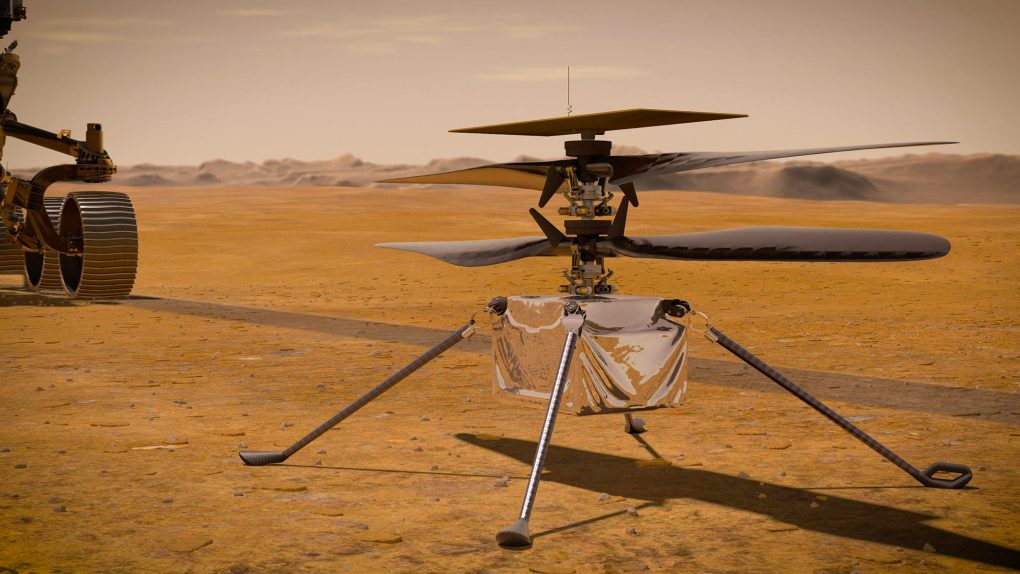NASA’s Mars helicopter accomplished an incredible first this week by taking flight on the Red Planet. It’s the first time that a manmade aircraft took to the skies of another world, and the apparent ease with which it completed this task is a great sign for the future of aerial vehicles for the purposes of space exploration. That being said, the first video we got of the event wasn’t the greatest. It was low resolution, grainy, and you could barely see what was happening. Now, after a few days with the raw footage, NASA has released a new enhanced video that shows the flight with much more clarity, even showing the cloud of dust that the helicopter kicked up when it left the ground.
The helicopter’s maiden flight was a pretty low-weight affair. All the helicopter had to do was take off, hover for about half a minute, and then land. It nailed every part of the plan, and its hover was very stable. With this newly-enhanced video, we can see for the first time just how steady it was.
As you see, the video is split into two windows. On the right side, we have the enhanced clip of the helicopter’s flight in visible light. On the left, we are treated to a view from motion-detecting software that highlights pixels that show what appears to be motion. In this case, the helicopter and the dust cloud it creates as it takes off, hovers, and lands, lights up the motion detection window, and makes it much easier to see how the helicopter is affecting the ground below.
NASA explains:
The Mastcam-Z imager aboard NASA’s Perseverance Mars rover shot video of the helicopter’s flight. The video is presented here in side-by-side formats that have both been enhanced to show a dust plume swirling during takeoff and again on landing.
The view on the left uses motion filtering to show where dust was detected during liftoff and landing and the view on the right is enhanced with the motion filtering. Scientists use this image processing to detect dust devils as they pass by Mars rovers. An additional version of the video includes a timer that counts down until liftoff and then counts up until landing. A ghostly “cut-out” of the helicopter is visible in each side-by-side format; that’s an artifact related to the digital processing.
The result is an even better glimpse at what NASA accomplished with its plucky little helicopter. The future, of course, depends entirely on how Ingenuity performs, and while NASA hasn’t announced anything related to plans for Mars aerial drones, the first test flight certainly should have filled the scientists with confidence. We’ll wait and see how the next few weeks play out and how many more flights the helicopter has in it, but for now things are looking very good.








